If you are a native of Iowa you must have seen or heard of the local tree frogs. These amazing tree frogs add a big value to maintain the balance of the ecosystem of Iowa. It’s high time you learn about them and appreciate them. But how many of them exist in Iowa, and can you even find them all?
After doing a little bit of research I found 5 tree frogs in Iowa. They are Western chorus frog, Gray tree frog, Boreal chorus frog, Spring peeper and Blanchard’s cricket frog. All of these frogs have distinct features that make them stand out from one another.
Here’s an A-Z guide to frogs in Iowa. Hopefully, you will know much more about your existing neighbors.
5 Exciting Tree Frogs Of Iowa
I am so excited to talk about these frogs. Are you just as excited as I am? Or curious even?. You will discover their habitat, breeding season, egg cluster, size, diet, lifespan, and how they like to call for mates during their reproduction phase.
After you finish reading this article, you’ll become a sort of expert on tree frogs residing in Iowa, and you can even tell your friends!
Let’s have a look…
1. Western Chorus Frog
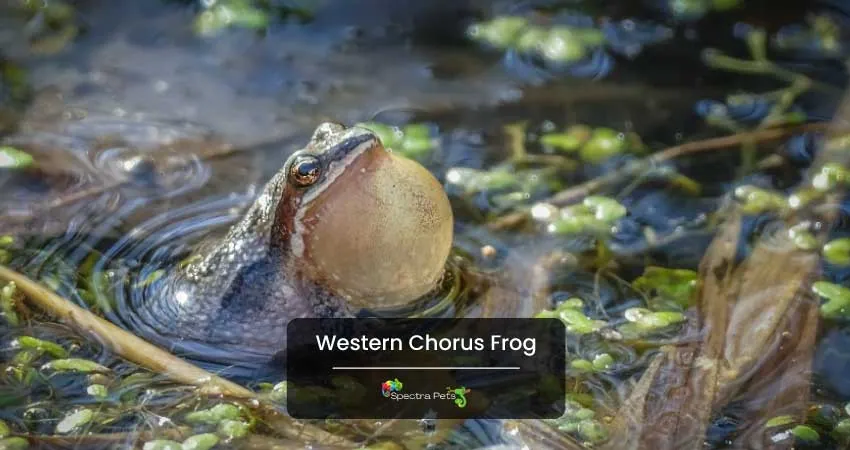
A common species that’s native to a big portion of the western USA. These teeny-tiny tree frogs pick areas with dense vegetation for habitation. It helps them to cover & disguise themselves.
In Iowa, you will find them in wetlands like grassy pools, ponds, marshes, ditches & meadows are their favorite place for living & breeding.
Plus, the 0.75 to 1.5″ size body makes them barely noticeable to potential predators. Though they can have different skin colors, the most common is olive green, gray, and brown. Smooth & moist skin makes them look more squishy. Stripes on the back are visible.
The Diet list is quite long and includes small flies, beetles, leafhoppers, spiders, caterpillars, moths, ants, thrips, and snails.
About the lifespan, this species lives for 1 year while few of them can make 3+ years in the wild. Their hibernation ability lets them survive the harsh freezing winter. During that time, they either go underground or stay under logs.
For mating, the male makes a call that catches the attention of the female. During March-June they breed frequently and the female lays more than 1000 eggs on the floating vegetation. And, a large number of froglets enter the ecosystem within 3 months of hatching.
These are nocturnal animals & start searching for food at night. Surprisingly their webbed feet make them excellent swimmers which assist them to fly from their hunters
Moreover, they are blessed with camouflage ability to blend with the background color. It gives them an edge in surviving in the wild.
Furthermore, the calling sound of this amazing frog is loud & resembles somebody running their thumb on a comb. They will make the sound many times & the call lasts approximately one second.
2. Gray Tree Frog
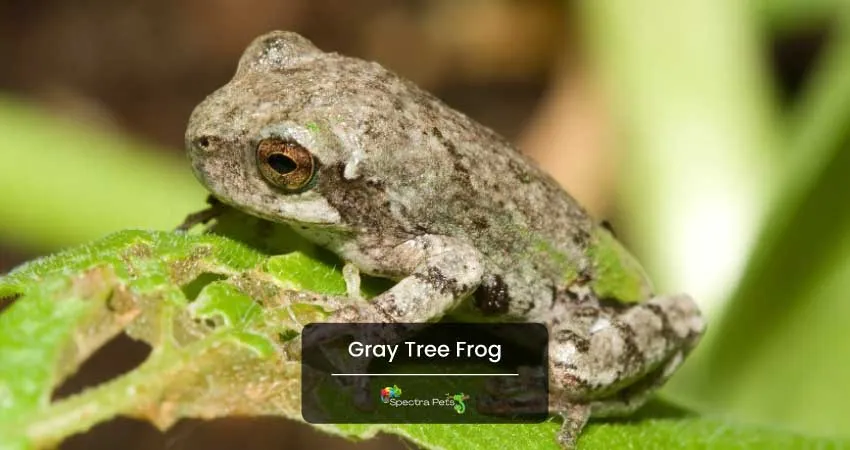
Any amphibian lover would find the gray tree frog a captivating one. The skin can change according to its surroundings from gray to brown to green. In daylight, they appear darker while at night they tend to become lighter colors.
So how good are they at tree climbing? Their specialized toe grip helps them get onto trees both vertically & horizontally without much effort. Using the warty skin, they secrete toxins that make the predator irritate & help them to survive for a long time.
Around 2 years old they reach sexual maturity and get ready for the breeding season lasts from April- August. During their mating time, the male makes a unique birdlike loud sound to attract the female.
Moreover, the male becomes very aggressive & greenish as the mating period goes on. They choose to mate in standing water that’s loaded with high vegetation. The 1.25-2.25″ size gives them a huge advantage to keep their number stable in the food chain.
People of Iowa will hear them calling from forests, wooded areas, backyards, agricultural land, swamps, etc. Regarding lifespan, this species is blessed with a long average of 7-9 years in the natural habitat. They continue this long journey while eating different foods like mites, small-sized frogs, slugs, insects, ants, plant lice and snails, etc.
In their juvenile period, they can be seen close to the bottom of trees because they like to hide under leaves & shrubs during day time. However, as these amphibians get older they start spending most of the time on top of the trees.
In the summertime, the native people of Iowa & other eastern states of the USA will see this creature roaming around & hunting insects in their backyard.
3. Boreal Chorus Frog
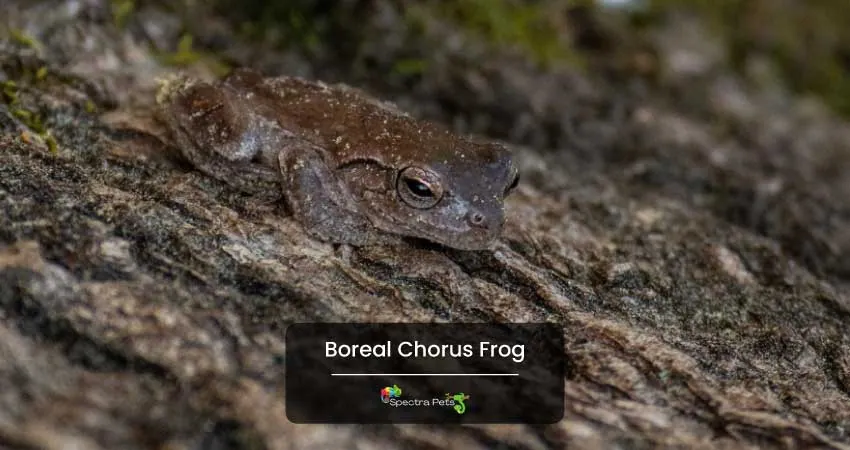
As a nocturnal & shy animal, it’s quite hard to see them roaming around in open places even in their habitat. This incredible creature can be seen in versatile colors like reddish, gray, olive and brown, etc.
Similar to other members of the Hylidae family, the female sizes are bigger than the male. Size can go up & down from 0.75″ to 1.5″. The stripes on the back are the distinctive mark of this species.
Though small in size, they provide a strong impact on the ecosystem by hunting slugs, mites, earthworms, & spiders. Climbing trees is not a big deal for them but still, they like to stay on the habitat floor to continue their hunting mission.
In addition to Iowa, this species is native to many North American states & Canadian provinces. Their ideal habitat is a slow-moving water body which includes woodland ponds, roadside ditches, flooded fields & sloughs of rivers.
Coming to the lifespan, these frogs rarely survive more than 2 years. Though few of them can go on for 3+ years, most of them get killed by the higher-level hunters of the food chain.
As soon as the spring season comes, the male & female frogs gather in temporary pools for mating. The male attracts the female by making a loud preep preep call.
Thanks to their insane ability to hibernate during the deadly cold winter. The moment the temperature drops below -40 degrees Fahrenheit, they start coming into their hunting mood.
4. Spring Peeper
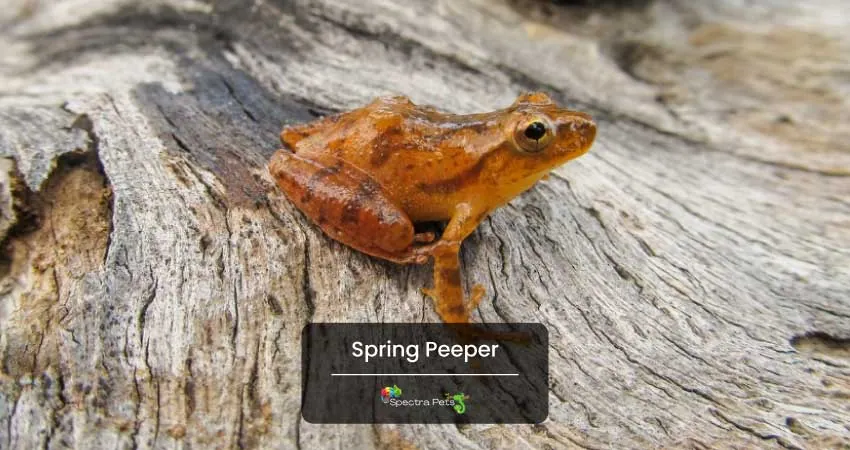
Spring peeper has a huge population all across Iowa. This cute-looking tree frog is available in brown, green, gray, reddish, and tan colors. Their ability to make the skin hue darker or lighter saves them significantly from the predator.
While they stay active at night, during the day, they spend hiding under forest leaves and shrubs. Compared to other Hylidae members, the Spring peeper has a better average lifespan of 3-4 years. Their sticky toe pad gives them great advantage for climbing that eventually helps them to evade predators.
Every animal has their unique mark & this species has a cross mark on its back skin. You can distinguish the male from the female by looking at the skin hue. Males have darker skin & small size while the females are bigger & lighter skin hue.
In addition to that, the breeding season starts in April & ends in June. From the egg-laying time to froglet forming, it takes around 3 months. These species are well popular for making loud noises during mating season. The trill can reach up to 90 decibels & hear from a good distance.
Moreover, these frogs have outstanding hibernation ability which helps them survive the ice-cold winter without any hassle. They simply hibernate by sheltering under any bark of the tree. The rich diet of this species is made up of spiders, ants, mites, and beetles.
Finally, these tiny buddies choose moist zones, wooded areas, grassland & fields that are just next to water bodies.
5. Blanchard Cricket Frog
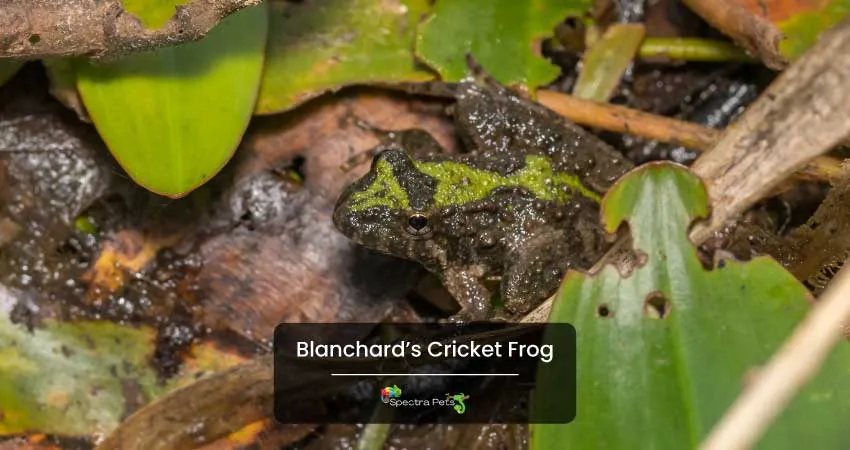
What makes them unique is their calling sound anytime during 24 hours. Surely they are one of the small size native amphibians of Iowa.
Plus, the natural habitat of this species includes lakes, rivers, marshes, fens, low prairies, and mud flats. Just like a maximum tree frog, the body size is little and around 0.6-1.5″.
In June & July, this species starts its mating process. And it’s common to hear them making a clicking sound from their mating spot. These creatures favor slow-moving or stagnant water as their breeding zone.
Speaking of color, Blanchard’s cricket frog can have versatile skin shades including olive green, brown, greenish tan and gray, etc. On their back, you can see irregular stripes with green, yellow, or red colors.
Unlike other species, they don’t have ultra-strong hibernation activity in the winter. As a result, their number gets a sharp cut-off every winter. Hardly 5% of the total population can pass the winter safely.
When it comes to their diet, they are highly insectivorous animals that eat almost every small insect that fits their mouth. However, when they feel threatened, they tend to jump onto water & even fake death.
The native people of Iowa will find this species in open places during summertime as they stay active both day & night in this season.
Sadly their number is dangerously slowing down in northern Iowa which makes them an endangered species.
Final words
Here I tried my best to give you the different attributes of the five tree frogs in Iowa.
This frog is the big reason your house is not getting overcrowded with insects. Apart from beauty they balance the food chain of nature.
I expect that now you have a concrete idea about these magnificent creatures around you.
Tree Frogs Found in the Nearby States of Iowa:

